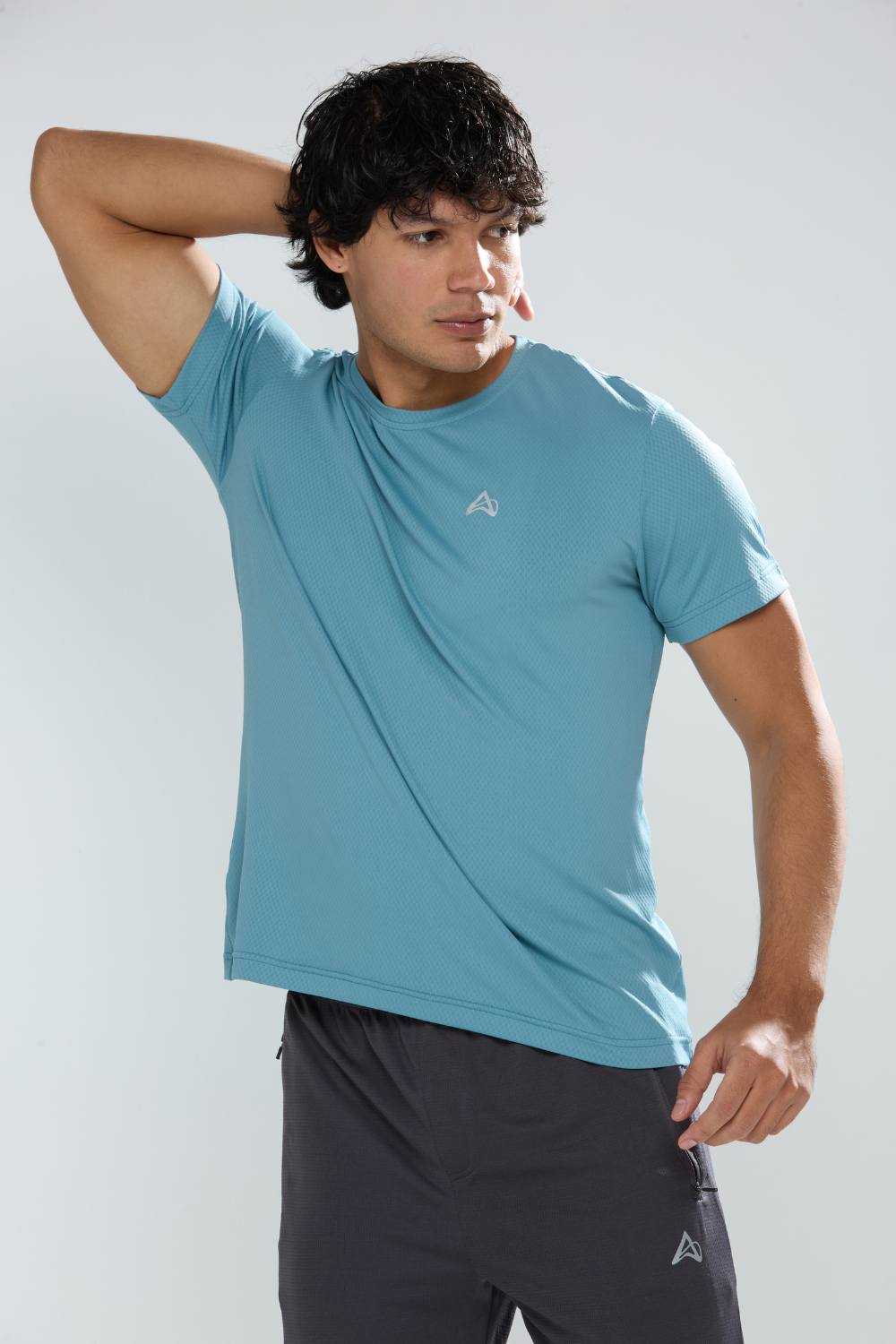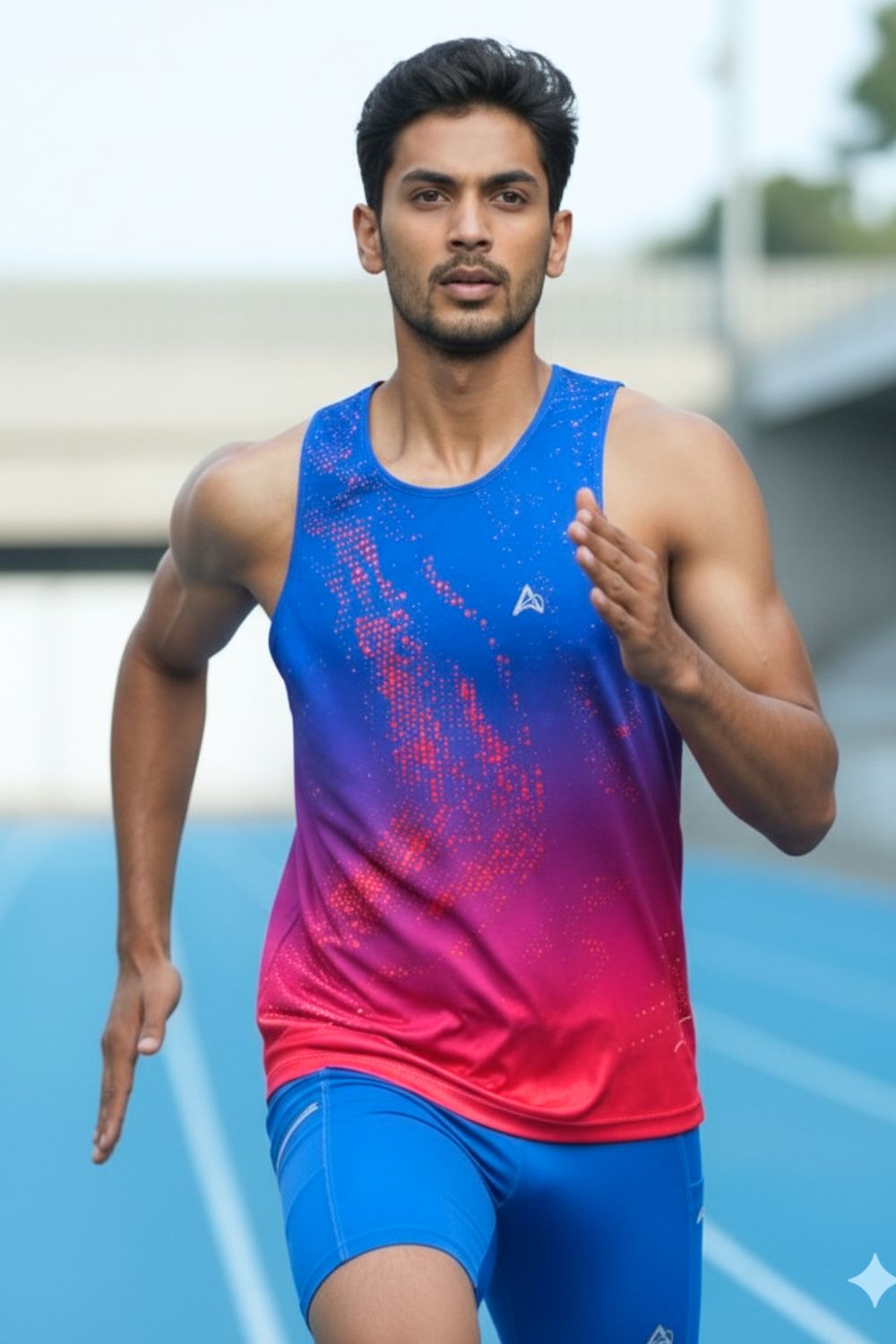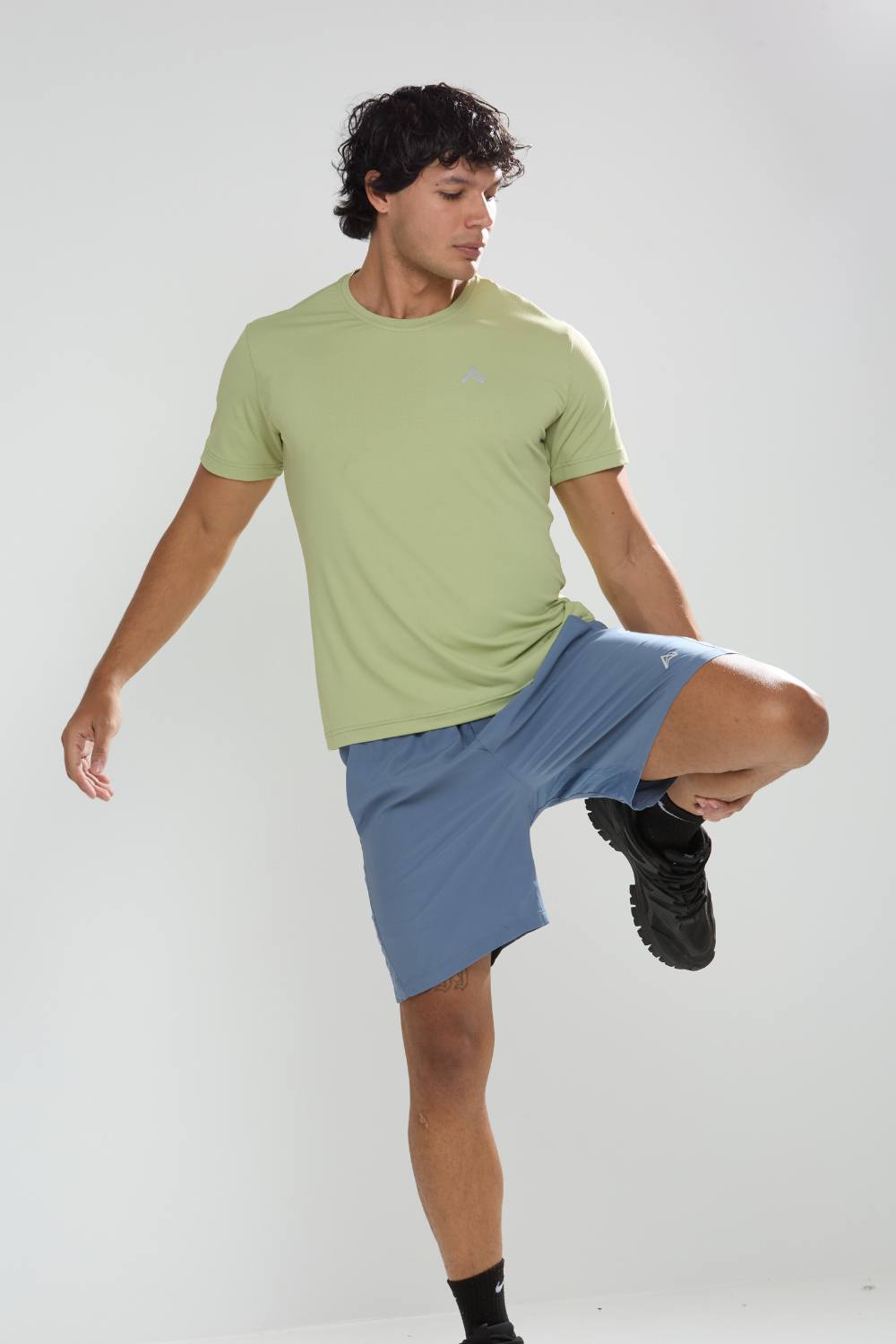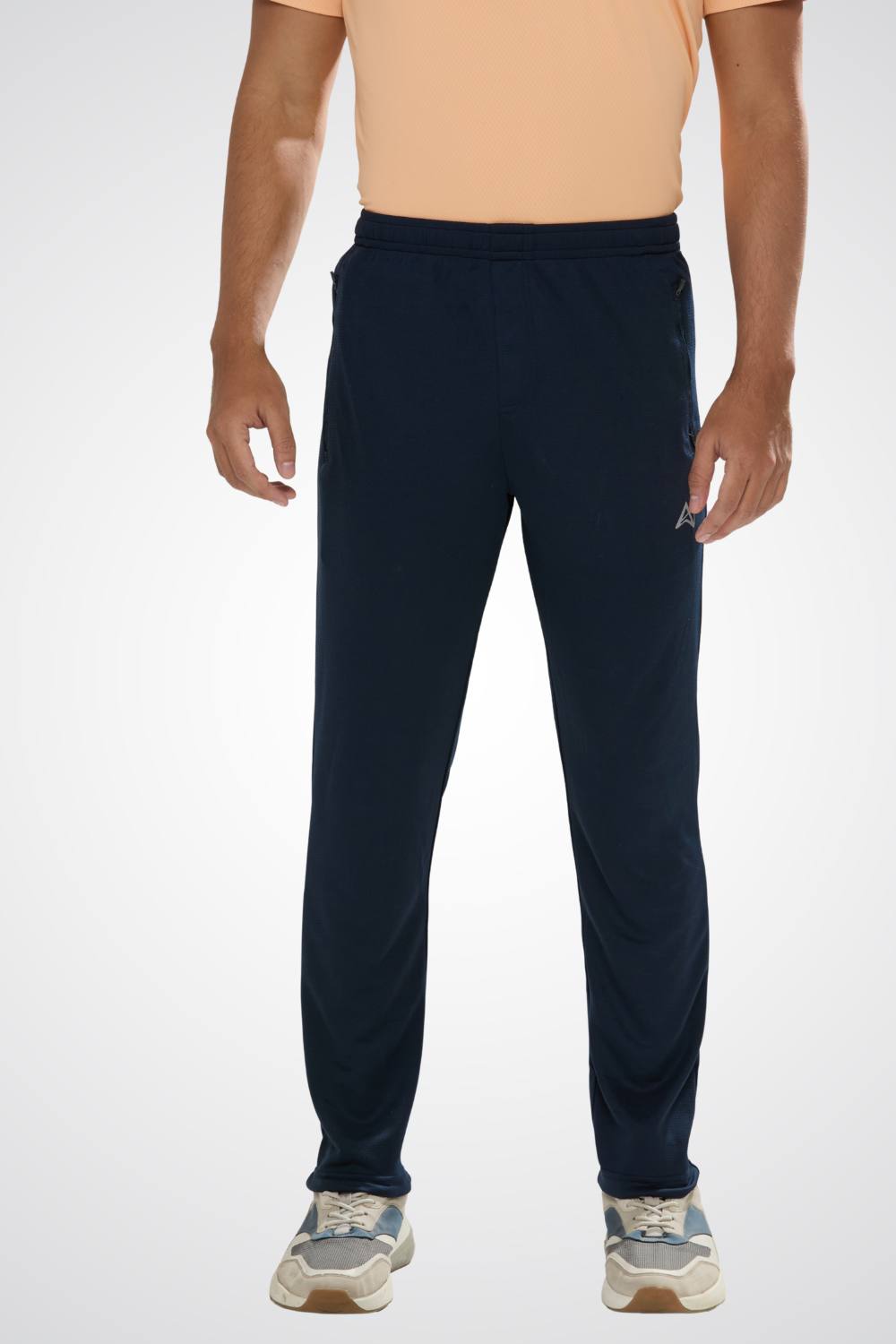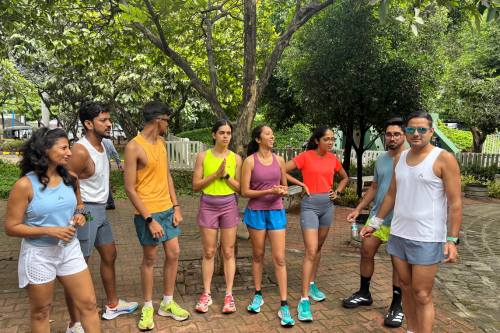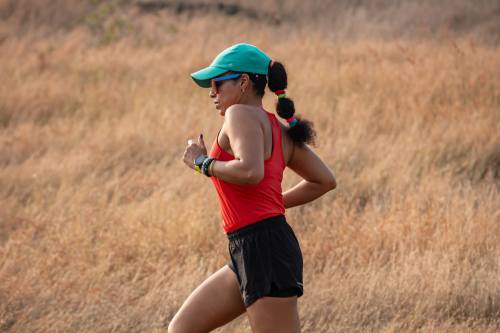Quick Listen:
The crack of the starting pistol echoes across the starting line, unleashing a torrent of determined runners into the dawn light. Their strides sync in a symphony of purpose, each footfall propelled by more than sheer willpower it's the alchemy of cutting-edge gear that turns endurance into triumph. From carbon-infused soles that rebound like springs to garments engineered to defy sweat and strain, endurance sports such as marathons, century rides, and ironman triathlons have become crucibles for athletic innovation. In 2025, as athletes chase personal bests and global records, the apparel industry stands at the vanguard, channeling a voracious market into breakthroughs that redefine human limits.
Tired of gear that slows you down? Chafing, soggy fabrics, and missing pockets kill your run's momentum. At Aguante, we're runners who get it. Our high-performance activewear features moisture-wicking fabrics, ergonomic designs, and smart storage to keep you focused. Shop Now!
The Surge of a Fitness Revolution
Behind this fervor lies an economic juggernaut. The global running gear market reached a valuation of $44.18 billion in 2024, with projections soaring to $69.86 billion by 2033 at a steady compound annual growth rate of 5.18 percent from 2025 onward. North America asserts dominance, capturing more than 31.1 percent of the share that year, propelled by relentless technological strides, a burgeoning awareness of fitness benefits, and explosive growth in event participation think marathons drawing crowds in the tens of thousands and trail runs weaving through untamed wilderness. This isn't mere speculation; it's a reflection of how everyday people, armed with apps and aspirations, are transforming jogging into a lifestyle imperative to combat sedentary ills and bolster mental resilience.
Zoom out, and the picture sharpens. The encompassing sports equipment and apparel sector clocked in at $374.2 billion in 2023, charting a trajectory to nearly $992 billion by 2034 with a robust 9.5 percent CAGR starting in 2024. Here, apparel isn't ancillary it's foundational: jerseys that breathe, shorts that flex, footwear that cushions impacts, all calibrated for the rigors of prolonged exertion. These elements prioritize breathability and moisture management, shielding athletes from the elements while amplifying endurance in pursuits from pavement pounding to pedal grinding. What fuels this ascent? Accessibility. Endurance demands no gatekeepers; a pair of sneakers and open road suffice, democratizing the pursuit and swelling ranks of participants worldwide.
Yet, as fields swell from urban 5Ks to rugged ultras brands face an imperative: evolve or evaporate. Consumers, now savvier and more demanding, seek gear that anticipates needs, from adaptive thermoregulation to seamless data integration. This pressure cooker of innovation isn't accidental; it's the market's response to a cultural pivot where health isn't optional but essential, birthing products that empower rather than encumber.
Fabrics That Fight Back: The Material Frontier
Enter the lab-coated wizards of textiles, where science meets sweat. Modern running stores brim with wonders: tees that evaporate perspiration faster than it forms, tights that contour without constriction, insoles that whisper corrections to your gait. Moisture-wicking tech, once a luxury, now underpins every layer, channeling vapor away to maintain core equilibrium. Adaptive polymers shift porosity in response to heat, venting excess in swelters or trapping warmth against chills, as seen in the latest iterations from pioneers like Craft Sportswear's Kype Pro shoe, blending propulsion with precision engineering for half-marathon dominance.
Elasticity evolves too, with hybrid yarns that elongate under duress yet snap back unyielding, ideal for the contortions of trail descents or bike sprints. Durability? Non-negotiable. Gear endures barrages grit grinding soles, gales lashing fabrics prompting reinforcements like nano-coatings that repel abrasions and self-healing threads that mend micro-tears. Then, the fusion with wearables: vests pulsing with biometric sensors, armbands logging strides in real-time, even insoles decoding pronation via embedded chips. These aren't gimmicks; they're game-changers, as evidenced by the Coros Pace 3 watch, lauded for its GPS fidelity and battery life in grueling ultras. In this blend of cloth and code, apparel transcends attire, becoming a silent coach on the course.
Sustainability: Racing Toward Responsibility
Innovation's true test? Its footprint. The recreational and outdoor products arena, pegged at $137.7 billion in 2024, anticipates a 5.7 percent CAGR through 2034, buoyed by wellness waves and tech infusions amid urban sprawl and policy pushes for green spaces. Cycling circuits, trail treks, and open-water swims draw hordes seeking solace in nature, yet they demand gear that doesn't despoil it. Enter eco-reckoning: recycled polyesters reborn from ocean-bound plastics now thread marathon's worth of shorts, slashing virgin material needs by up to 70 percent in leading lines.
Bio-fabrics surge ahead, harvested from algae blooms or sugarcane, decomposing harmlessly post-race. Waterless dyeing curtails runoff, while circular models rental rotations and take-back programs curb landfill legacies. Nike's recycled Flyknit exemplifies this ethos, weaving waste into world-beating speed, while Lululemon's SeaWheeze series harnesses plant-derived nylons for supple, soil-sparing stretch. Younger athletes, Gen Z trailblazers, vote with wallets, shunning fast fashion for enduring ethics. Ignore this, and brands falter; embrace it, and they lead a paradigm where performance and planet align.
This tide reshapes supply chains: e-commerce explodes, ferrying sustainable swag door-to-door, while smart integrations like GPS-laden packs entice tech-tethered trekkers. Governments amplify via incentives for low-impact manufacturing, ensuring the outdoor boom benefits backwoods as much as balance sheets.
From Lab to Leg: Athlete's Verdicts
The litmus? Miles logged, records shattered. Elites hail Nike's Vaporfly lineage for its propulsive plates, trimming marathon clocks by precious minutes through energy-return wizardry. Cyclists cloak in wind-cheating kits from TD Sportswear, slicing drag in 2025's aero-obsessed pelotons. Triathletes pivot in suits that sluice water and snap-dry, bridging disciplines without drag. Recreationals, the silent majority, glean subtler gains: a vest averting chafe on century spins, socks staving blisters in 50Ks.
For ultra's masochists, where 100 miles test mortality, gear averts catastrophe thermo-regulating shells against midnight chills, luminous threads for nocturnal navigation. Collaborations cement credibility: Under Armour refines with Sharon Lokedi's input, birthing long-haul heels that cradle without compromise. Lululemon consults Ironman vets, yielding hybrids of give and grip. These aren't boardroom brainchildren; they're forged in feedback loops, proving innovation's worth in sweat-soaked testimonials.
Broader ripples: AR/VR simulations preview gear in virtual races, per Deloitte's outlook, accelerating adoption. From novice 10Ks to elite circuits, the verdict rings clear: superior kit doesn't just equip it elevates.
Navigating the Gauntlet of Progress
Glory exacts tolls. R&D voracity inflates costs; birthing a breakthrough fabric devours millions, squeezing margins and pricing out aspirants a $300 super-shoe dazzles elites but daunts dilettantes. Affordability's tightrope demands clever compromises: modular designs for upgrades, not overhauls.
Ecology's double-edge cuts deep: green gains clash with churn, as novelties obsolete loyal layers, bloating e-waste. Equilibrium beckons durable eco-threads that last, repair hubs extending lifespans. Skepticism simmers too; runners grill gadget's grit does that sensor sync sans glitch? Do bio-blends fray post-fifty spins? Trust builds brick by empirical brick: peer-vetted paces, race-proven resilience. In 2025's scrutiny, hype yields to hard data, weeding weak links.
Horizons of Hustle and Harmony
Obstacles notwithstanding, vistas vasten. Endurance's swell record marathon mobs, triathlon tides craves inclusive innovation: breathable basics for budding bikers, scalable smarts for casual crews. Brands wielding moisture mastery at mass-market tags seize swells.
Synergies sparkle: Garmin's metrics mesh with Gore-Tex guards, spawning symbiotic suits. App alliances Strava syncing with sensor shirts craft constellations of insight, from pace prognoses to recovery rites. These webs don't peddle products; they propagate passions, binding brands to believers.
Trail Running Association's 2025 clarion "Innovation" encapsulates this ethos, spotlighting tech's trailblazing role. As AR overlays augment training and biodegradable breakthroughs beckon, the sector surges toward a trillion-dollar tomorrow, per Technavio's outdoor apparel augury of $7.3 billion growth.
Endurance's Enduring Legacy
Endurance transcends fad it's fabric, rewiring wellness, wardrobe, and worldviews. Propelled by a $44.18 billion running realm and $374.2 billion sports sphere, the industry hurtles toward convergence: prowess, plushness, planetary piety. Smart weaves, sensor symphonies, verdant vials cease as extras, ascending to axioms.
Forward flashes: AI artisans tailoring toes to torsos, reactive realms reshaping mid-stride, circular economies eclipsing disposables. Sustainability's sine qua non crowns custodians of creation. Today, each crest conquered, circuit closed, crestfallen climb chronicles a craft not chasing but charting courses. Lace tighter next outing; that harness isn't habiliment it's harbinger, heralding humanity's unbound odyssey.
Frequently Asked Questions
What are the latest innovations in endurance sports gear for 2025?
The latest endurance sports gear innovations include adaptive polymers that adjust fabric porosity based on temperature, carbon-infused soles with energy-return technology like Nike's Vaporfly series, and smart apparel with embedded biometric sensors. These advances focus on moisture-wicking fabrics, self-healing threads, and wearable tech integration that provides real-time performance data to athletes during races and training.
How is sustainability changing the endurance sports apparel industry?
Sustainability is revolutionizing endurance sports apparel through recycled polyesters made from ocean-bound plastics, bio-fabrics derived from algae and sugarcane, and waterless dyeing processes. Leading brands like Nike and Lululemon now offer circular models including rental programs and take-back initiatives, with recycled materials reducing virgin material needs by up to 70 percent in some product lines.
What makes modern running gear worth the investment for endurance athletes?
Modern running gear delivers measurable performance benefits through advanced moisture-wicking technology, adaptive thermoregulation, and energy-return systems that can improve marathon times by minutes. With the global running gear market reaching $44.18 billion in 2024, innovations like hybrid yarns for flexibility, nano-coatings for durability, and integrated GPS tracking provide both recreational and elite athletes with gear that enhances endurance, prevents injury, and optimizes training data.
Disclaimer: The above helpful resources content contains personal opinions and experiences. The information provided is for general knowledge and does not constitute professional advice.
You may also be interested in: Aguante Sporswear for Men and Women
Tired of gear that slows you down? Chafing, soggy fabrics, and missing pockets kill your run's momentum. At Aguante, we're runners who get it. Our high-performance activewear features moisture-wicking fabrics, ergonomic designs, and smart storage to keep you focused. Shop Now!
Powered by flareAI.co





